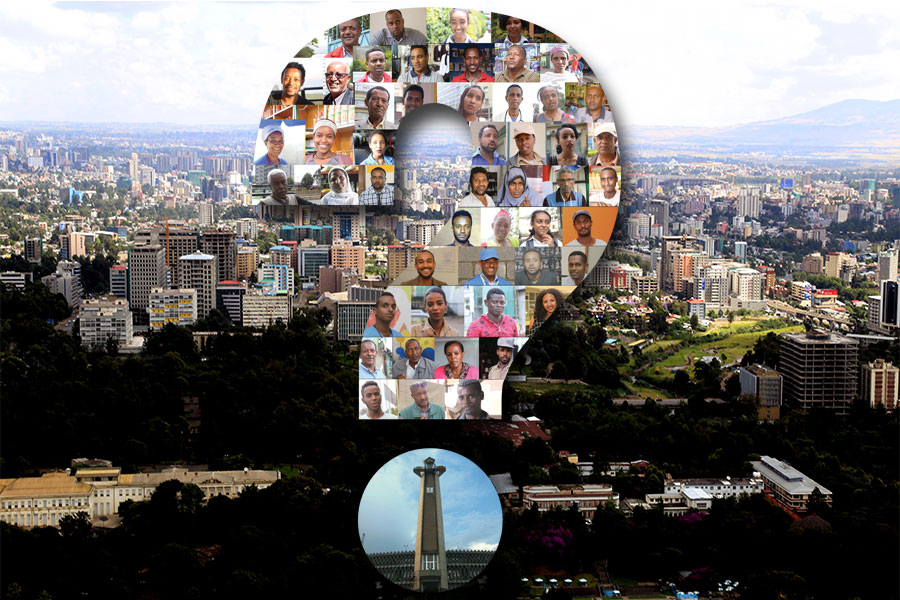
Photo Gallery | 180397 Views | May 06,2019
Aug 2 , 2025. By BEZAWIT HULUAGER ( FORTUNE STAFF WRITER )
A long standing corporate dispute over Cosmo Trading Plc has resurfaced at the Federal Supreme Court, after a federal prosecutor, Kahesay Negasi, lodged an appeal challenging a prior ruling that favoured Azeb Mihretab and her co-defendants in a six-year-old legal battle over contested share transfers and alleged financial misconduct.
The appeal, submitted on July 21, 2025, targets a decision that upheld the legality of a 2017 transaction in which Azeb, the major shareholder of JJ Property Management Plc, acquired a majority stake in Cosmo Trading. The acquisition, valued at 20 million Br, involved 19 shares at a par value of 1,000 Br and an additional 50 shares from two minority shareholders. What began as a corporate takeover quickly devolved into a complex judicial saga, with allegations of coercion, irregularities, and financial malfeasance.
Kahesay’s appeal alleges that the previous court overlooked critical evidence and committed procedural missteps. Central to the Prosecutor’s argument are claims that the defendants engaged in activities “akin to unlicensed financial institutions,” including high-interest lending, illicit remittance schemes, and money laundering.
Named as respondents alongside Azeb and Temesgen are Adeferes Habte, and general managers from affiliated companies, TTH Trading Plc and Boston Real Estate. Mesfin Asmamaw, another former executive, faces additional allegations, including intentional harm.
In the Prosecutor's appeal, key procedural shortcomings were raised, including that only nine of the 35 witnesses initially listed by the Prosecution were heard during the trial. Kahesay claims this undermined the comprehensive examination of the evidence. He also stated the delayed submission of a crucial audit report by the Ministry of Revenue, “a document repeatedly requested by the Court,” which the Prosecutor insisted obstructed justice.
Prosecutor Kahesay’s appeal alleges that the previous court overlooked critical evidence and committed procedural missteps.
The initial court proceedings were several intertwined allegations, including usury, money laundering, and misuse of managerial positions. Specifically, Azeb, alongside associates Haregewoin and Efrem, faced accusations of facilitating a high-interest loan of 50 million Br to Haileyesus at an interest rate of nine percent.
The Prosecution contended that Azeb had transferred 3.2 million Br into Haileyesus’s account, later producing disputed documentation of a 60 million Br property sale allegedly never authorised by Haileyesus. It was alleged that Haileyesus faced considerable pressure to relinquish company shares and other assets.
Federal prosecutors assert in their appeal that Azeb and Temesgen engaged in a pattern of “illicit financial activities” while managing Cosmo Trading Plc. They stand accused of securing bank loans and subsequently diverting more than 32 million Br to JJ Property Management and affiliated entities under their control.
Further charges claim that Temesgen misappropriated company revenues derived from rents and asset sales.
Adding complexity, the Prosecution described additional financial misconduct, alleging “illegal remittance operations,” where approximately 383,000 dollars in state revenue was allegedly lost due to funds being moved through third-party accounts, thereby masking their authentic sources.
The fifth count of the indictment implicates corporate entities, JJ Properties, TTH Trading, and Boston Real Estate, in “deliberately obscuring these financial transactions’ origins.” Mesfin, separately, faces charges related to “abuse of his managerial role at Cosmo Trading.”
Despite the gravity of these allegations, an earlier Supreme Court ruling in April had reversed a Federal High Court decision that nullified the original share sale agreement, deeming there was insufficient evidence to substantiate claims of coercion by Azeb. The Supreme Court justices subsequently remanded the case back to the lower court for further scrutiny of the payment and transfer procedures associated with the disputed shares.
Central to Azeb’s defence is her argument that the original Cosmo Trading shareholders had failed to finalise the share transfer and supply the requisite documentation, despite reaching an explicit agreement. Contrarily, Haileyesus has continuously maintained doubts about the deal’s validity, alleging coercion and irregularities in the registration process.
Documents reviewed during the trial revealed financial intricacies, including an allocation of 5.1 million Br sourced from multiple banks and individuals, earmarked specifically to settle Cosmo Trading’s tax and other financial obligations.
Azeb and JJ Property Management told the Court that in May 2019, Cosmo Trading shareholders had collectively agreed to transfer their entire shareholding. Nevertheless, when the actual process commenced, the original shareholders reversed course, prompting litigation that landed in the Federal High Court.
Prosecutor Kahesay, in his appeal, has stated what he argued are several critical errors in the prior ruling. Notably, he claims the lower court inadequately addressed the charges of betrayal of fiduciary duty “despite acknowledgement of such misconduct within the trial.” Kahesay contends the defendants, Azeb and Temesgen, failed to convincingly refute the Prosecution’s claims on their alleged “financial malfeasance and illicit income streams.”
The appeal document asserts that the defendants “never denied a previous loan agreement existed,” something the Prosecution argues should have reinforced the money laundering charges. According to the Federal Prosecutor, Azeb and Temesgen’s “deliberate misuse of their managerial positions to funnel company funds into their private corporate accounts constitutes clear financial wrongdoing.”
Further grievances outlined by Kahesay include procedural hindrances, particularly criticising the Ministry of Revenue for its delayed audit report submission. The Prosecutor has urged justices of the Federal Supreme Court to allow the introduction of this previously unavailable audit document as fresh evidence. He appealed to the Court to consider explanations and initial police interviews for absent witnesses who were abroad at the time of the prior verdict.
The appeal strongly argued against the dismissal of charges related to unlicensed financial operations, stating that the lower court had inadequately assessed evidence indicating substantial state revenue losses. The Prosecutor asserted the need for a retrial based on these oversights and procedural errors, advocating for a thorough re-examination of all evidence presented, including newly available audit
PUBLISHED ON
Aug 02,2025 [ VOL
26 , NO
1318]

Photo Gallery | 180397 Views | May 06,2019

Photo Gallery | 170598 Views | Apr 26,2019

Photo Gallery | 161641 Views | Oct 06,2021

My Opinion | 137278 Views | Aug 14,2021

Nov 1 , 2025
The National Bank of Ethiopia (NBE) issued a statement two weeks ago that appeared to...

Oct 25 , 2025
The regulatory machinery is on overdrive. In only two years, no fewer than 35 new pro...

Oct 18 , 2025
The political establishment, notably the ruling party and its top brass, has become p...

Oct 11 , 2025
Ladislas Farago, a roving Associated Press (AP) correspondent, arrived in Ethiopia in...